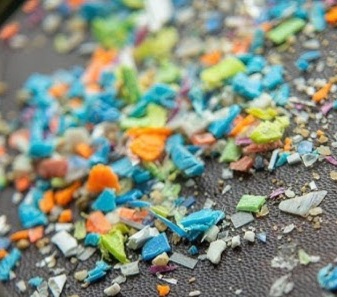New study reveals that micro plastic is getting deposited in human body…
A research on microplastics has revealed something big. In this, an analysis has been done on about 7 thousand studies on microplastics. According to Science Magazine, a research paper has shown that for the last 20 years, the presence of microplastic particles has been found in wild animals and in the bodies of people. Microplastics are spread on a large scale. This study has shown that microplastics are easily entering the body through food. In this research paper, it was told that the presence of microplastics has been found in every part of the human body. Many evidences have come to light regarding many side effects of such microplastics. If scientific evidence is to be believed, the problem of microplastics has never been so serious before, but there is an urgent need for collective global action to deal with it.
Small pieces become a big problem. Very small pieces of plastic are called microplastics, their length is five millimeters or less. Microplastics are deliberately added to some products. For example, microbeads are used in facial soaps. In other products, microplastics are created unknowingly when large pieces of plastic break down. For easy understanding, know that the fibers that come out of a polyester jacket after washing it are also a type of microplastic.
Microplastics are produced from all these. Several studies and research show that some sources of microplastics have been identified. Cosmetic cleansers, synthetic clothes, car tyres, fertilizers with plastic coating, ropes and nets used for fishing, and the use of thin plastic coatings to cover the top layer of soil produce microplastics. Science has not yet been able to estimate the rate at which large plastic particles break down and turn into microplastics. Scientists are also trying to find out how fast microplastics break down and turn into nanoplastics, whose size is less than a micron and which we cannot see with our naked eyes.
Microplastics are becoming a problem. It is very difficult to estimate the level of microplastics present in air, soil and water, but attempts are being made in research. A research published in the year 2020 estimated that 8 lakh to 30 lakh tonnes of microplastics reach the sea every year. At the same time, a recent report has indicated that three to ten times more microplastics reach the environment than the sea. If this estimate is correct, then it means that every year a total of 10 million to 40 million tonnes of microplastics reach the sea and the environment.
?Microplastics found in insects and wild animals. The worrying thing is that the rate of accumulation of microplastics in the environment is expected to double by 2040. Even if people stop the flow of microplastics in the environment, the breakdown of large pieces of plastic will continue.
The presence of microplastics has been recorded in more than 1,300 animals, including fish, birds and insects. Some animals swallow microplastics thinking they are food, which puts their intestines at risk of rotting. Animals are also harmed when the plastic pieces present in their bodies discharge chemicals. How does microplastics enter the human body? The presence of microplastics has been confirmed in all of the water we drink, the food we eat and the air we breathe. Not only this, but microplastics have been found in everything from seafood to salt, honey, sugar, beer and tea. Sometimes microplastics present in the environment get mixed with food items. In many cases, their fragments also reach them during packaging and storage.
Scientists have recorded the presence of microplastics in human lungs, liver, kidneys, blood and reproductive organs. These pieces have also been gradually found in our brain and heart. Although some microplastics get out of our body through urine, many remain in it for a long time. These also pose a risk of rotting of human intestines.
What is the effect of microplastics on health? There are different types of microplastics. They also contain different types of chemicals. They react differently when exposed to liquids or sunlight. Apart from this, the species of organisms are also different. This makes it a little difficult for scientists to assess the side effects of microplastics. However, some success has been achieved in finding out its effect on human health. In the coming years, its side effects on the human body can become clear like this. When microplastics affect, there may be swelling in your body.
Oxidative stress i.e. imbalance between free radicals and antioxidants can also occur. This gradually weakens immunity. Concerns about microplastics are increasing. People's concerns about microplastics are increasing. It is almost impossible to remove microplastics deposited in the environment and there is a possibility of being exposed to it for a long time, so concerns are increasing. Microplastic pollution is the result of human activities and decisions. Some countries have implemented laws to curb the discharge of microplastics, but this is not enough to deal with the problem. The fifth round of talks will be held on this at the global level in November.
Post Views: 360


Comments are closed.